Black Cohosh
- December 20, 2023
- 0 comment
Black Cohosh, scientifically known as Actaea racemosa, is a perennial herb native to North America that has garnered attention for its potential health benefits, particularly in addressing women’s health issues. Renowned for its traditional use among Native American communities, this herb has found a place in herbal medicine and alternative therapies.
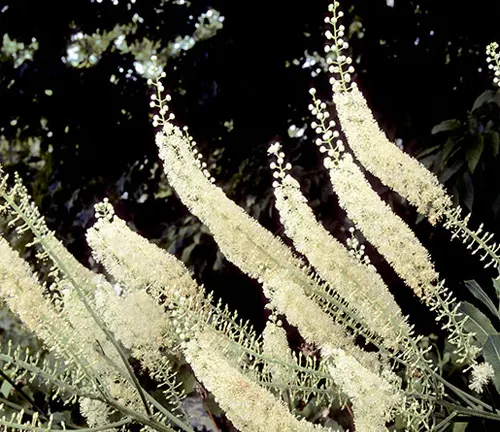
The roots of the black cohosh plant are the primary part used for medicinal purposes, and they contain phytochemicals such as triterpene glycosides. One of the most well-known applications of black cohosh is in managing symptoms associated with menopause, such as hot flashes, night sweats, and mood swings. While the exact mechanisms of action are not fully understood, it is believed that black cohosh may influence serotonin receptors and have mild estrogenic effects. It is important to note that scientific research on the efficacy of black cohosh is ongoing, and its use should be approached with caution.

As with any herbal remedy, individuals should consult with healthcare professionals before incorporating black cohosh into their wellness routines, especially if they have pre-existing medical conditions or are taking other medications.
| Characteristic | Details |
|---|---|
| Scientific Name | Actaea racemosa |
| Common Name | Black Cohosh |
| Family | Ranunculaceae |
| Native Region | North America |
| Plant Type | Perennial Herb |
| Part Used for Medicine | Roots |
| Active Compounds | Triterpene Glycosides |
| Traditional Use | Native American Remedies, Women’s Health (Menopause) |
| Potential Benefits | Menopausal Symptom Relief, Mood Regulation |
| Mechanism of Action | Serotonin Receptor Influence, Mild Estrogenic Effects |
| Caution | Consult Healthcare Professional Before Use |
Unveiling the Charm of Black Cohosh
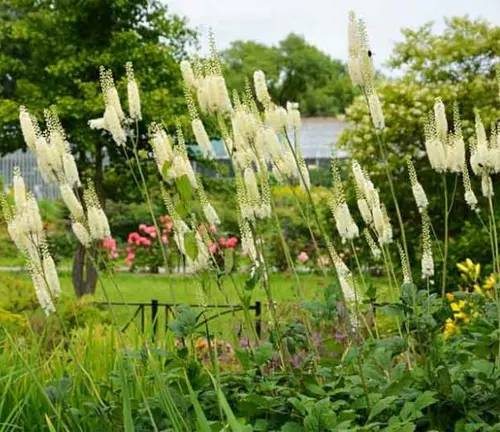
Nature’s tapestry is adorned with a plethora of botanical wonders, and among them stands the graceful Black Cohosh (Actaea racemosa). Delving into its botanical realm reveals a perennial herb native to North America, captivating not only for its aesthetic appeal but also for its potential health benefits.
Black Cohosh in its Natural Habitat
Picture a tranquil woodland setting, where dappled sunlight filters through the foliage, and amidst the verdant tapestry emerges the woodland elegance of Black Cohosh. Flourishing in the under story of deciduous forests, this perennial herb showcases its slender stems and distinctive foliage, adding a touch of sophistication to the forest floor.
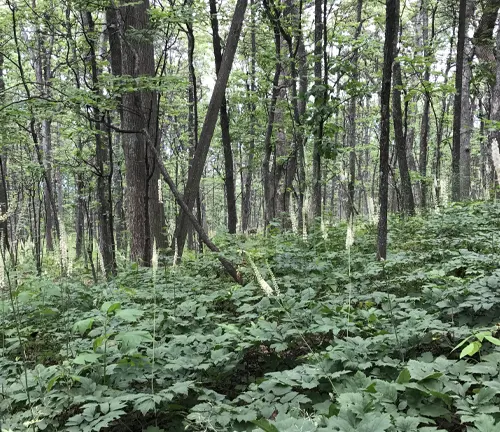
Black Cohosh’s Role in the Ecosystem
Beyond its visual allure, Black Cohosh plays a crucial role in the ecosystem. As a member of the Ranunculaceae family, it contributes to the biodiversity of its habitat. The plant provides shelter and sustenance for various wildlife, emphasizing its ecological importance in maintaining the delicate balance of the forest ecosystem.

Nurturing the Legacy of Black Cohosh
Efforts to cultivate and conserve Black Cohosh have gained momentum as its popularity grows. Cultivating this herb requires an understanding of its natural habitat, ensuring optimal conditions for growth. Simultaneously, conservation initiatives aim to protect the plant in the wild, recognising its value both in traditional medicine and as a part of the ecosystem.
Black Cohosh as Nature’s Stabilizer
Black Cohosh goes beyond its role in herbal medicine and ecology; it also contributes to soil stabilization. With its extensive root system, this perennial herb helps prevent soil erosion, anchoring itself firmly in the ground. Nature’s stabilizer, Black Cohosh silently performs a vital service in maintaining the integrity of its habitat.
Unveiling the Versatility of Black Cohosh
The roots of Black Cohosh have been a staple in traditional Native American remedies, showcasing the plant’s versatility. Used for centuries, this herb has found its way into herbal medicine cabinets, addressing various health concerns. From teas to tinctures, Black Cohosh’s common uses reflect its adaptability and therapeutic potential.
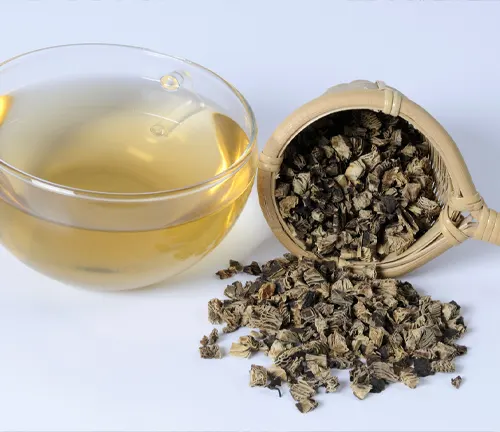

Harnessing the Power of Black Cohosh
Perhaps most renowned for its benefits in women’s health, Black Cohosh has gained recognition for alleviating symptoms associated with menopause. The triterpene glycosides found in its roots are believed to influence serotonin receptors and exhibit mild estrogenic effects, offering a natural alternative for those seeking relief from hot flashes, night sweats, and mood swings.
Exploring the Wonders of Black Cohosh
In the intricate tapestry of botanical marvels, Black Cohosh (Actaea racemosa) stands out as a biological wonder. Delving into its biological characteristics unveils a plant rich in complexity, offering not only visual appeal but a treasure trove of active components that contribute to its unique qualities.
Tracing the Native Range of Black Cohosh
Embarking on a journey to understand Black Cohosh involves mapping its natural habitat. Native to North America, this perennial herb thrives in specific ecological niches, such as the under story of deciduous forests. Exploring its habitat map not only reveals its preferred regions but also highlights the delicate balance required for its growth and sustainability.
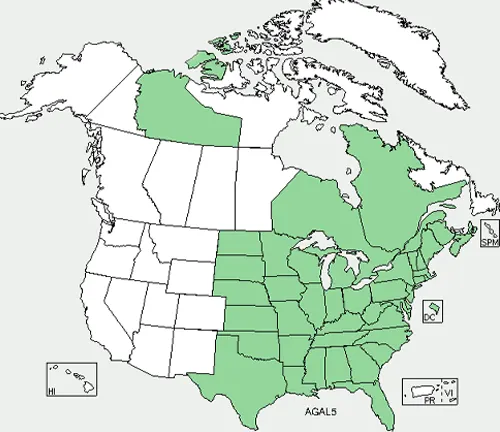
Unraveling the Chemistry of Black Cohosh
At the heart of Black Cohosh’s biological prowess lies a complex array of components, with triterpene glycosides taking center stage. These active compounds, found primarily in the plant’s roots, contribute to its medicinal properties. Delving into the chemistry of Black Cohosh unveils the intricate interplay of these components, offering insight into its therapeutic potential.
Navigating the Nuances of Black Cohosh
As with any botanical remedy, understanding the potential side effects is crucial. While Black Cohosh has been traditionally used for various health purposes, it’s essential to acknowledge the nuances of its impact. Some individuals may experience mild side effects, such as digestive upset or headaches. Navigating the side effects of Black Cohosh requires a nuanced approach, emphasizing the importance of consulting with healthcare professionals.
Different Species
Actaea racemosa
(Black Cohosh)
This is the most well-known species and is the one commonly used in herbal medicine, particularly for women’s health issues.

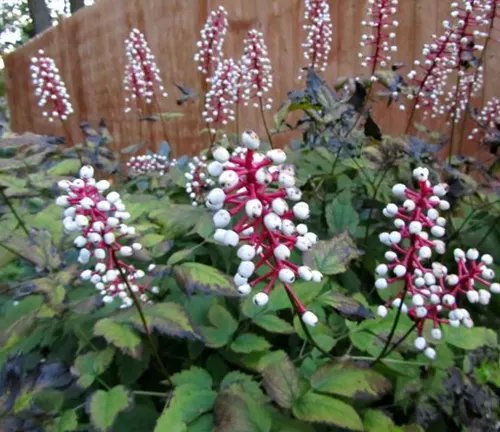
Actaea pachypoda
(Doll’s Eyes or White Baneberry)
While not specifically called Black Cohosh, it belongs to the same genus. Doll’s Eyes is known for its distinctive white berries with black dots, resembling eyes, and is found in North American woodlands.
Actaea rubra
(Red Baneberry or American Baneberry)
Similar to White Baneberry, Red Baneberry is another species within the Actaea genus. It produces bright red berries and is also native to North America.

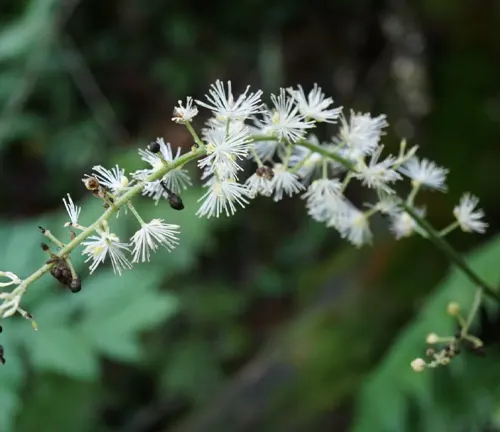
Actaea podocarpa
(Asian Baneberry)
Found in parts of Asia, this species is related to Black Cohosh but is distinct. It has been used in traditional medicine in some Asian cultures.
Frequently Asked Questions (FAQs)
- What is Black Cohosh?
Black Cohosh (Actaea racemosa) is a perennial herb native to North America, known for its traditional use in herbal medicine, particularly in addressing women’s health concerns. - What are the Active Compounds in Black Cohosh?
The primary active compounds in Black Cohosh are triterpene glycosides, which are found in the plant’s roots. - What is Black Cohosh Used For?
Black Cohosh is commonly used to alleviate symptoms associated with menopause, such as hot flashes, night sweats, and mood swings. It has also been employed in traditional Native American remedies. - How Does Black Cohosh Work?
The exact mechanisms of action are not fully understood, but it is believed that Black Cohosh may influence serotonin receptors and have mild estrogenic effects, contributing to its efficacy in managing menopausal symptoms. - Is Black Cohosh Safe?
While generally considered safe for short-term use, it’s essential to consult with healthcare professionals before incorporating Black Cohosh into your routine, especially if you have pre-existing medical conditions or are taking other medications. - Are There Any Side Effects of Black Cohosh?
Some individuals may experience mild side effects, including digestive upset or headaches. Monitoring for any adverse reactions and seeking professional advice is recommended. - Can Men Use Black Cohosh?
While Black Cohosh is often associated with women’s health, some men use it for conditions like prostate issues. However, consulting with a healthcare provider is advisable. - How is Black Cohosh Prepared and Consumed?
Black Cohosh is available in various forms, including capsules, tinctures, and teas. The preparation and dosage may vary, and it’s crucial to follow recommended guidelines. - Where Does Black Cohosh Grow?
Black Cohosh is native to North America and typically thrives in the under story of deciduous forests. - Can Black Cohosh Interact with Medications?
Yes, Black Cohosh may interact with certain medications. It’s important to inform your healthcare provider about any herbal supplements you are taking to avoid potential interactions. - Is Black Cohosh an Endangered Species?
While not currently listed as endangered, there is concern about overharvesting of wild Black Cohosh populations. Efforts are made to cultivate and conserve the plant responsibly.



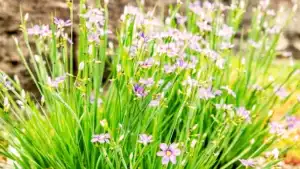
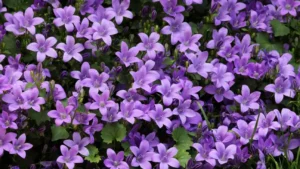

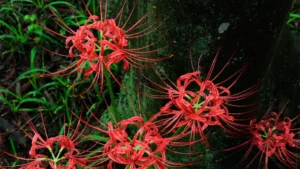

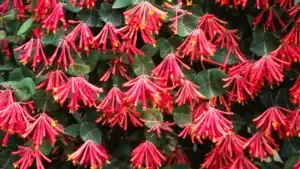

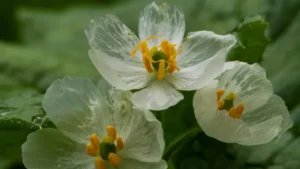
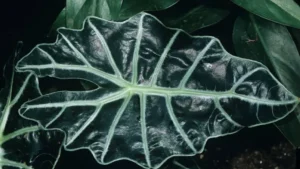

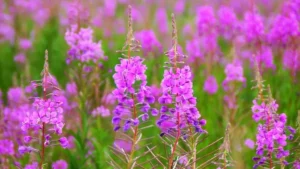
Leave your comment